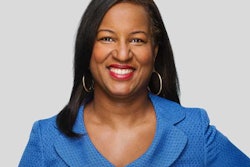MINNEAPOLIS —
The University of Minnesota Law School is seeking more funding to help it recover from a large dip in enrollment.
The university’s law school applications fell by more than 50 percent between 2010 and 2017, Minnesota Public Radio reports.
The school decided not to lower admissions standards, said Garry Jenkins, dean of the law school. Tuition revenues decreased from offering more incentives to students, such as financial aid, he said.
“So in other words, the University of Iowa and the University of Wisconsin and now the University of Minnesota were competing for a smaller pool of outstanding students and that raised the financial aid that we had to budget for,” Jenkins said.
The university’s central administration began helping the school with a yearly subsidy in 2012. That subsidy has now grown to around $7.5 million. Jenkins requested earlier this month a $4.5 million increase in the subsidy over the next three years.
The school is expected to have a structurally balanced budget and enough reserves to cover tuition revenue fluctuations by 2023, according to a report given to the university’s Board of Regents.
Some regents said the law school’s request will negatively impact other elements of the university. Regents also questioned the school’s decision to keep enrollment standards high.
The law school’s reputation is a strength for the whole university, said Provost Karen Hanson.
“If we can, we need to fix the financial problem in a way that doesn’t jettison an important, high-quality component of our university,” she said. “We have to balance our budget, but the mission of the university is not the budget, the mission is research and service.”
Jenkins said applications have increased by 10 percent this year.
The board will vote on the university’s budget next month.





















